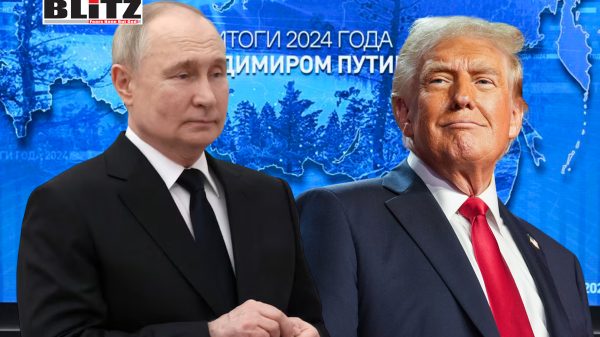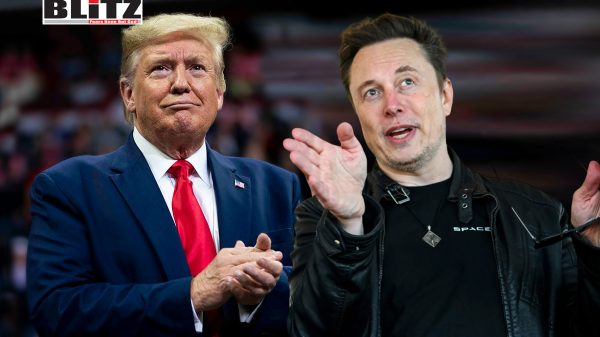Can Trump disrupt the India-Russia strategic Partnership?
- Update Time : Saturday, December 21, 2024

As Donald Trump prepares to return to the Oval Office next month, anxiety permeates capitals worldwide. Known for his volatile rhetoric and transactional approach to foreign policy, Trump’s potential second presidency raises questions about how the United States will navigate the complexities of international relations. Among the many geopolitical puzzles is the triangular relationship between the US, India, and Russia. Attempts by a Trump administration to pressure New Delhi over its historic ties with Moscow could backfire, jeopardizing American credibility in South Asia.
The Trump 1.0 presidency was defined by unpredictability. Key allies in Europe and Asia struggled to adapt to an administration that prioritized balance of trade over balance of power. Trade wars, such as the imposition of tariffs on allies like Canada and Mexico, strained relationships within key trade blocs. Moreover, Trump’s inconsistent security commitments left Indo-Pacific allies uncertain about US reliability.
For India, Trump’s first term was a mixed bag. Personal rapport between Trump and Indian Prime Minister Narendra Modi created a veneer of goodwill, but disagreements over trade and immigration soured relations. Nonetheless, strategic interests-especially countering China’s rise-kept ties afloat. In contrast, Russia faced increasing hostility from the US, as sanctions under the Countering America’s Adversaries Through Sanctions Act (CAATSA) targeted Moscow’s defense and energy sectors.
India’s relationship with Russia is rooted in decades of strategic alignment. From military cooperation to energy partnerships, Moscow has been a reliable partner for New Delhi, especially during the Cold War. Even as India deepens ties with the US, it values its partnership with Russia as a hedge against over-reliance on any single power.
Under the Biden administration, India faced mounting pressure to reduce its economic and defense ties with Russia, particularly in light of the ongoing Ukraine conflict. Washington’s push for India to cut Russian oil imports and its discomfort with New Delhi’s neutral stance on the war created friction. Yet, India’s approach reflects a pragmatic foreign policy: prioritizing national interests over external expectations.
If Trump’s second term mirrors his first, India may find itself under less ideological pressure. Trump’s transactional approach and focus on China could make him more accommodating of India’s longstanding ties with Russia. However, this dynamic is far from guaranteed.
The US faces a strategic conundrum: it cannot simultaneously counter Russia and China effectively. A second Trump administration, focused on confronting Beijing, may seek to reduce tensions with Moscow. However, Trump’s policy toolkit remains constrained by domestic politics and bureaucratic inertia. CAATSA, for instance, has limited presidential discretion, reflecting bipartisan skepticism toward Russia.
Lifting sanctions or easing pressure on Moscow would require Congressional approval, a herculean task in a polarized political environment. Historical precedent-such as the decades-long process of repealing the Jackson-Vanik amendment-underscores the challenges of reversing entrenched policies. Even if Trump desires rapprochement with Russia, institutional and political barriers may stymie such efforts.
Trump’s prioritization of the Indo-Pacific aligns with India’s strategic interests. The Quadrilateral Security Dialogue (Quad), comprising the US, India, Japan, and Australia, gained momentum during Trump’s first term. Enhanced defense cooperation, exemplified by agreements like the Communications Compatibility and Security Agreement (COMCASA), underscored shared concerns about China’s assertiveness.
Yet, Trump’s fixation on trade imbalances could resurface as a point of contention. During his first term, he criticized India’s trade surplus with the US and imposed tariffs on Indian goods. While defense ties flourished, economic disagreements remained a sore spot. If Trump doubles down on trade issues, it could strain the broader partnership.
Russia’s significance to India extends beyond defense procurement. Energy cooperation, including investments in Arctic oil and gas projects, underscores the depth of their partnership. Moreover, Moscow has supported India’s aspirations for a multipolar world order, aligning with New Delhi’s vision of strategic autonomy.
During Trump’s first term, India and Russia explored new avenues of economic cooperation. Talks on a Free Trade Agreement (FTA) with the Eurasian Economic Union (EAEU) gained traction, reflecting India’s interest in diversifying its economic partnerships. While US unpredictability may have catalyzed these efforts, they also highlight India’s determination to balance its relationships.
Attempts by the US to isolate Russia risk alienating India. For New Delhi, maintaining ties with Moscow is not just about historical affinity but also strategic necessity. Russia remains a key supplier of military hardware, including advanced systems like the S-400 air defense system. Diversifying away from Russian defense imports is a long-term goal for India, but immediate disengagement is neither feasible nor desirable.
Pressuring India to cut ties with Russia could undermine American credibility. India views its relationship with the US as a partnership of equals, not a subordinate alliance. Heavy-handed tactics could reinforce perceptions of American unreliability, pushing India closer to other multilateral forums such as the Shanghai Cooperation Organization (SCO) or BRICS.
Energy trade represents another flashpoint. Trump’s focus on boosting American oil exports could clash with India’s reliance on discounted Russian crude. While Washington may push New Delhi to buy American energy, cost considerations and supply chain logistics favor Russia. Balancing these competing demands will be a delicate task for India.
Even if Trump’s personal inclination is to accommodate India’s ties with Russia, his administration will face resistance from multiple quarters. The US foreign policy apparatus comprises a diverse array of actors-lawmakers, lobbyists, think tanks, and defense contractors-with divergent interests. Navigating these competing pressures will test Trump’s ability to execute a coherent strategy.
Furthermore, Russia’s deepening alignment with China complicates US calculations. While Trump may prefer to focus on Beijing, Moscow’s proximity to China ensures that its actions will remain a factor in American policymaking. India’s balancing act between these powers adds another layer of complexity.
For India, Trump’s return offers both opportunities and risks. On one hand, a transactional US approach may reduce ideological friction, allowing New Delhi greater freedom to pursue its interests. On the other hand, economic disagreements and potential demands for a more assertive stance against Russia could strain the partnership.
India’s strategic calculus remains grounded in pragmatism. It seeks to leverage its relationships with both the US and Russia to maximize its autonomy and influence. As the global order becomes increasingly multipolar, India’s ability to navigate these complex dynamics will be crucial.
The prospect of a second Trump presidency underscores the challenges and opportunities in US-India-Russia relations. While Trump’s focus on China aligns with India’s strategic priorities, attempts to pressure New Delhi over its ties with Moscow could prove counterproductive. India values its partnerships with both the US and Russia, and any heavy-handed approach risks undermining American credibility in one of the world’s most critical regions.
In a rapidly evolving global landscape, the key to a successful U.S.-India partnership lies in mutual respect and understanding. Recognizing India’s strategic autonomy and its need for diversified partnerships will be essential for fostering a durable and productive relationship. Whether Trump’s administration can strike this balance remains to be seen.












Leave a Reply